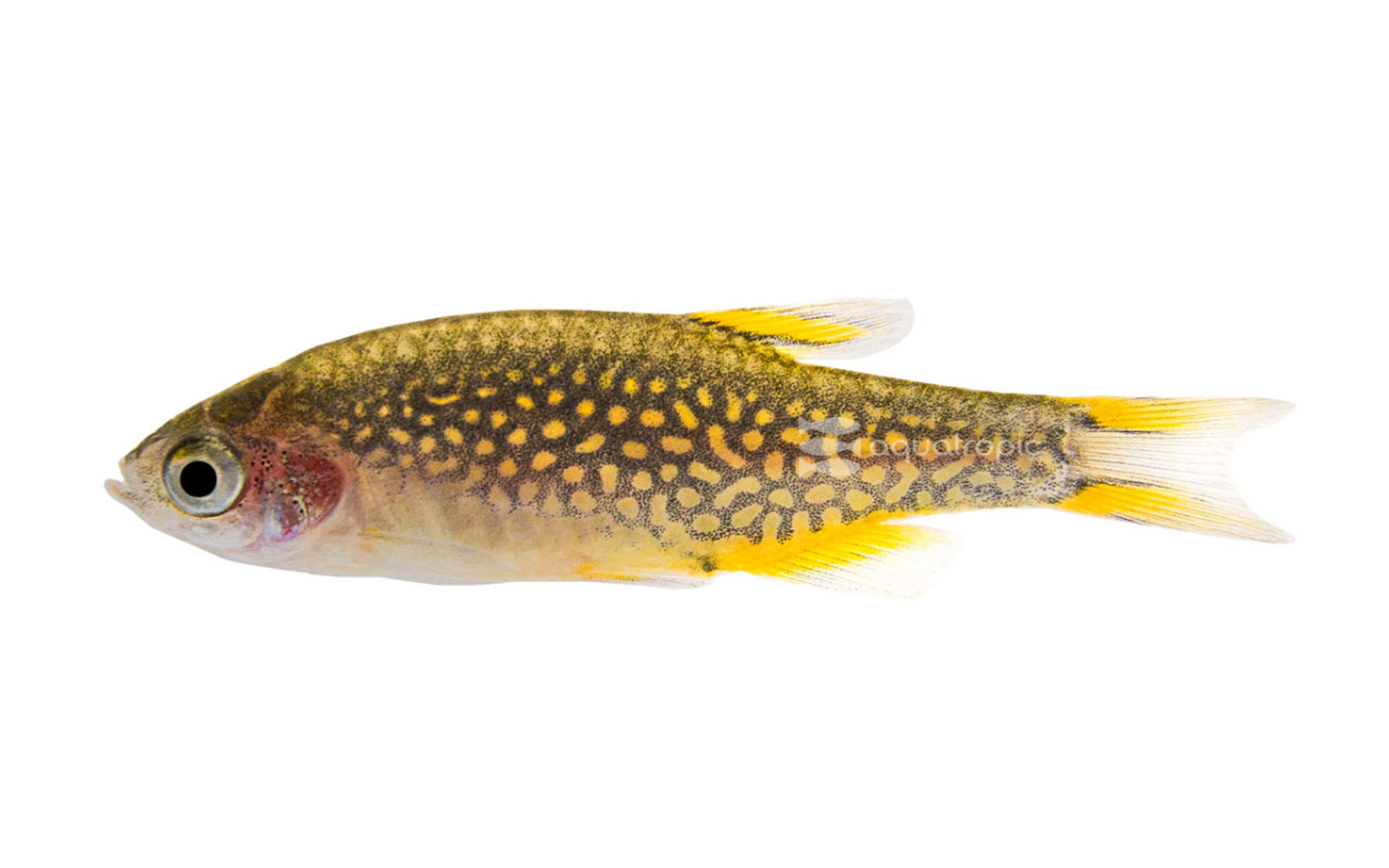Celestial Pearls

One of the tiniest fish in the aquarium hobby has got a banger of a name. It's the Celestial Pearl Danio; or maybe it's the Galaxy Rasbora? Wait, let's have a look at the scientific name and that ought to clear this whole debate up. It's Danio margaritatus, or is it Celestichthys margaritatus? In actuality these are all the same fish, and since their description for science in 2007, both these scientific names have been correctly used. Currently, Danio margaritatus has been deemed correct, and you can make your own argument for one or the other. Even though it isn't correct, Celestichthys margaritatus is the source of this species common name as “Celestichthys” translates roughly as “celestial fish,” and “margaritatus” translates roughly as “adorned with pearls,” both of these descriptors are easy to understand when you first see a group of Danio margaritatus.
As a side note, Danio is just the word for minnow in Myanmar where the Celestial Danio originally comes from (yawn). In the foothills of Myanmar (nee Burma) these fish were originally “discovered” in a single pond. Though since then they've been found in other areas, even into neighboring Thailand. Usually, they are found in shallow pools that are made when springs are dammed up for agricultural water supply, but can also be found in other slow, clean impoundments. These ponds are very clear, very shallow, and very heavily vegetated. The water is clean, has a neutral pH (within a point or two of 7) and average hardness.
All this needs to be considered when making a display for your Celestial Danios. They'll do best in heavily planted displays, that have low flow and a tank cover. Believe it or not, these little buggers can jump. CPD's will show their most outstanding colors over a dark substrate, and do best with plenty of places to hide from each other, or at least from other males. The females are generally quite peaceful, but the males can be very territorial with each other. The sparring of the males is a beautiful show, as long as there is enough of them to spread out the aggression. As a result, we recommend keeping as many Celestial Danios as you can fit in your tank, think at least 15 - 20. Seriously, you want a lot of them, and you want more females than males; try to have at least 3 females for every male or more. If you see pairs form, they can be kept by themselves, and if you keep all females they can also be kept in smaller groups, but we'd still recommend more than six. Having a few frayed tails in the group is not uncommon, or cause for alarm. Males and females are very similar looking, both having the blue/grey bodies and white pearl spots, but the red/orange markings on the fins will be much more pronounced on the males, and the females will be a bit thicker through the middle.
The other aspect about planning this display is that Celestial Danios are tiny, and we mean REAL small. They rarely get bigger than 20mm; for those of you disinclined to learn the metric system, that's pretty much three quarters of an inch long. Even though they're petite, we recommend keeping them in a bigger aquarium than you might think is appropriate. If you're keeping pairs, something as small as five gallons might suffice if there was plenty of cover in the way of spawning mops or plants, but for a group of them (which is the best-looking tank, and the most natural display for the fish) we'd suggest a minimum of ten gallons for your 15 fish.
Can you keep Celestial Danios with other fish? Yes. Their aggression is usually limited to other Celestial Danios. The CPD's home ponds of Myanmar might also be home to Fireline Danios, Rosy Loaches, Flame Red Rasboras and few other species we don't often see in the North American hobby. The plants from their native environment are often Elodea, but they can also be the grasses of a flooded field, so choose whatever plants you want. They can be kept with other fish that aren't necessarily from their home country as well, but keep in mind that they are really, really small and likely to become food for hungry fish. As the Danios are a middle of the water column fish, choose things that will fill the gaps in the rest of the display. Things like Corys and Tetras or Rasboras are popular choices that work well. We've seen a few displays that feature the CPDs and a Male Betta, and this can be a mind-blowing combination. They'll also co-habitat with shrimp like Amanos and Cherrys, but are likely to eat shrimp offspring.
What else do they eat? Just about anything that's the right size. They'll take processed foods like flake and pellets but in our experience will be the most dazzlingly colorful if you feed them a varied diet. Here we give them a mix of Gamma Foods, including Daphnia, Tubifex, Cyclops, Rotifers and even small Copepods. They'll happily devour live foods like brine nauplii) and tubifex. Give them a lot of good nutritious stuff, and they'll reward you with shocking colors.
These little fish are often overlooked, and this is a great shame, there aren't too many more beautiful freshwater fish this side of a wild brook trout or arctic char, both of which would be incredibly difficult to keep in their very large and quite cold aquariums. With Celestial Danios, you get all those stark colors and wild spots in something quite at home in 10 gallons of 78-degree water on your desktop! Keep a healthy number of them, feed them well, give them plenty of places to hide and you can have a shoal of your own in your tank. Just ask your local fish store to give Aquatropic a call and get you a couple dozen today!